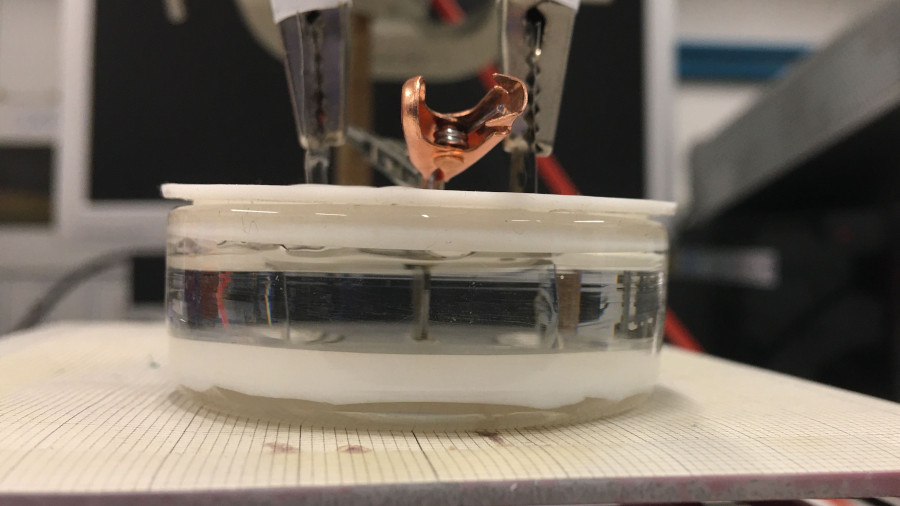First-ever wireless device developed to make magnetism appear in non-magnetic materials
Researchers at the UAB and ICMAB have succeeded in bringing wireless technology to the fundamental level of magnetic devices. The emergence and control of magnetic properties in cobalt nitride layers (initially non-magnetic) by voltage, without connecting the sample to electrical wiring, published in Nature Communications, represents a paradigm shift that can facilitate the creation of magnetic nanorobots for biomedicine and computing systems where basic information management processes do not require wiring.

Electronic devices rely on manipulating the electrical and magnetic properties of components, whether for computing or storing information, among other processes. Controlling magnetism using voltage instead of electric currents has become a very important control method to improve energy efficiency in many devices, since currents heat up circuits. In recent years, much research has been carried out to implement protocols for applying voltages to carry out this control, but always through electrical connections directly on the materials.
A research team formed by members of the UAB Department of Physics and ICMAB, with the collaboration of the Institute of Microelectronics of Barcelona (IMB-CNM-CSIC) and the ALBA synchrotron, has managed for the first time to modify the magnetic properties of a thin layer of cobalt nitride (CoN) by applying electrical voltage without the use of wires. To do this, researchers placed the sample of magnetic material in a liquid with ionic conductivity and applied the voltage to the liquid via two platinum plates, without connecting any wires directly to the sample. This generated an induced electric field that caused the nitrogen ions to leave the CoN and caused magnetism to appear in the sample, which changed from non-magnetic to magnetic. The induced magnetic properties can be modulated as a function of the applied voltage and actuation time, as well as the arrangement of the sample, and temporary or permanent changes in magnetism can also be conducted, depending on the orientation of the sample with respect to the imposed electric field.
"Being able wirelessly to control the magnetism of a sample by modifying the voltage represents a paradigm shift in this area of research," explains Jordi Sort, ICREA researcher at the UAB Department of Physics. "This is a finding that could have applications in a wide range of fields such as biomedicine, to control the magnetic properties of nanorobots without wires, or in wireless computing, to write and erase information in magnetic memories with voltage but without wiring.”
The methodology presented by the researchers to achieve wireless magnetic control is not exclusive to the material used in the experiments, cobalt nitride. For ICMAB researcher Nieves Casañ-Pastor, "these protocols can be extrapolated to other materials to control other physical properties wirelessly, such as superconductivity, memristor control, catalysis or transitions between insulator and metal, as well as wireless electrodes for neuronal electrostimulation, to cite a few examples that can expand the scope of application and technological impact of this research".
The study was recently published in the latest issue of Nature Communications and was led by ICREA researcher in the UAB Department of Physics Jordi Sort and ICMAB researcher Nieves Casañ-Pastor; and with the participation of Zheng-Ma, from the UAB Department of Physics, and Laura Fuentes, from ICMAB and the Institute of Microelectronics of Barcelona (IMB-CNM-CSIC), both first authors of the research article; Zhengwei Tan, Eva Pellicer and Enric Menéndez, from the UAB Department of Physics; Libertad Abad, from the Institute of Microelectronics of Barcelona CNM-CSIC; and Javier Herrero Martín, from the ALBA synchrotron.
Original article:
Zheng Ma, Laura Fuentes-Rodriguez, Zhengwei Tan, EvaPellicer, Llibertat Abad, Javier Herrero-Martín, Enric Menéndez, Nieves Casañ-Pastor, Jordi Sort. Wireless magneto-ionics: voltage control of magnetism by bipolar electrochemistry. Nature Communications. https://doi.org/10.1038/s41467-023-42206-5